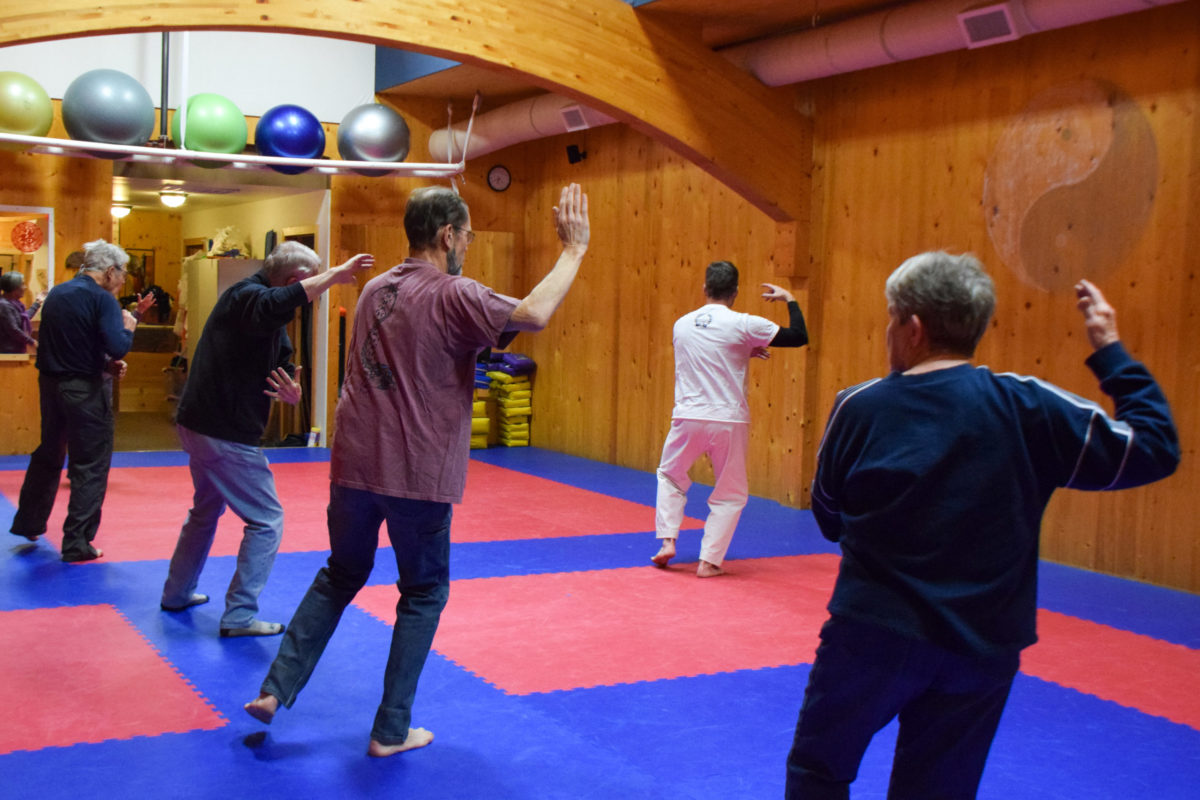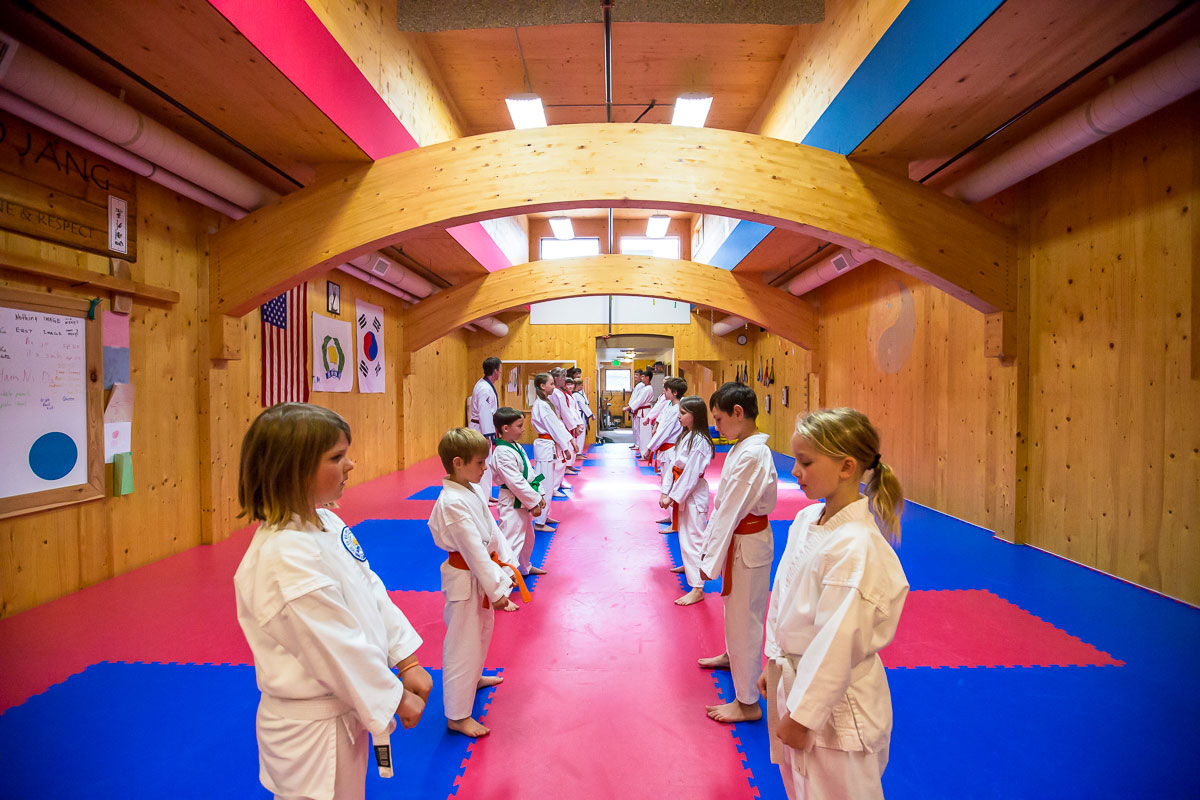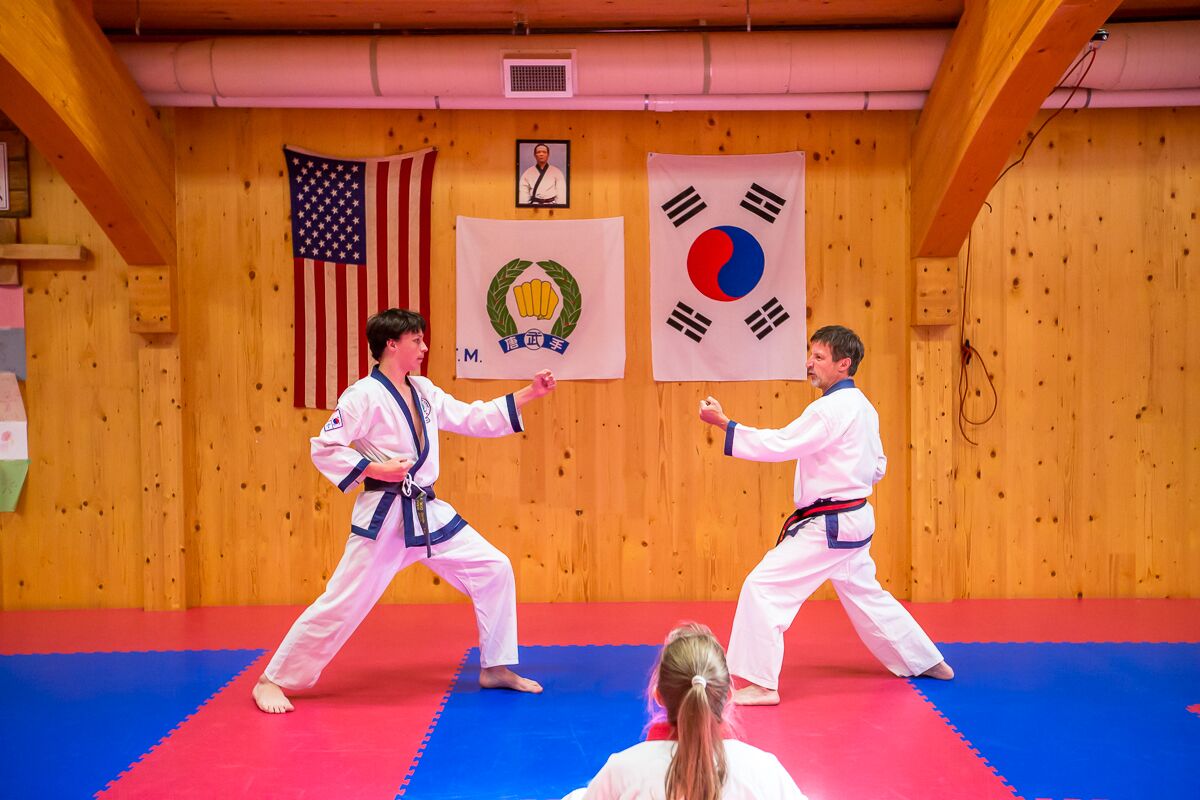Martial Arts Classes
The Practice of Traditional Martial Arts develops improved awareness, well being and strengthens human relations.



Tai Chi and Qi Gong
Meditation In Motion - some call it the perfect activity for the rest of your life.
Tai Chi is a type of internal martial art very well known for its defense techniques and more importantly its health benefits. The martial art has evolved over the years into an effective means of alleviating stress and anxiety. It has been considered to be a form of 'meditation in motion' which promotes serenity and inner peace.
This gentle form of exercise can help maintain strength, flexibility, and balance. There is growing evidence that this mind-body practice, which originated in China as a martial art, has value in treating or preventing many health problems. Like Qi Gong, the focus is on moving Qi or Chi, to renew vitality.
The softness of the moves helps to regenerate and relax the internal organs and the body. Developing the ability to move at a slowdown pace helps settle the mind and strengthens the mind/body connection.
People do Qigong to maintain health, heal their bodies, calm their minds, and reconnect with their spirit.
Qi Gong is an ancient Chinese health care system that integrates physical postures, breathing techniques and focused intention. The word Qi Gong (Chi Kung) is made up of two Chinese words. Qi is pronounced chee and is usually translated to mean the life force or vital-energy that flows through all things in the universe.
The second word, Gong, pronounced gung, means accomplishment, or skill that is cultivated through steady practice. Together, Qi Gong (Chi Kung) means cultivating energy, it is a system practiced for health maintenance, healing and increasing vitality.
When you realize the universe, the flow of Yin and Yang, and how to connect with this energy, you have found the Chi that will sustain you in times of emptiness and leaving you brimming with the fullness that one hopes to enjoy everyday.
What To Expect from the Do Jang
If you apply yourself, you will grow.
To properly enter the Do Jang, salute the flags, then bow with the Grandmaster's spirit seen in the picture over the flags. The bow is a greeting, like a handshake. It should be shared with all senior members to connect with the spirit of the training hall.
The owner and lead instructor, Andy Hamer is ever present. He speaks firmly during instruction, but thrives on his quiet disposition. Learning succeeds when led by example. The strength of technique can be seen in the postures that the instructor assumes, be it the graceful postures of T'ai Chi or the fighting stances of Soo Bahk Do.
Soo Bahk Do
Soo Bahk Do (combat with bare hands and feet) is the only Korean martial art handed down from the Ko Ku Ryo Dynasty, thereby making it the oldest Korean martial art (approx. 2,000 years old).
Translated literally, Soo Bahk Do means "Hand Cultivating Way" and Moo Duk Kwan means "Institute of Martial Virtue."
In Soo Bahk Do, we teach fighting techniques based in a philosophy that demonstrates courage, discipline, confidence and humility through training and actions towards others. The Moo Duk Kwan espouses victory without combat. The deeper meaning of the word Moo, martial, is where martial means resolving your personal conflicts to better manage interpersonal interactions.
The goal is to improve human relations, which starts with working on yourself internally through meditation and breath, then externally through combat exercises to feel confident in the bustling world.
Here is the official Soo Bahk Do website to learn more.
Need more information? We're here to help!
Contact us to learn more about our training classes, registration or for other questions.